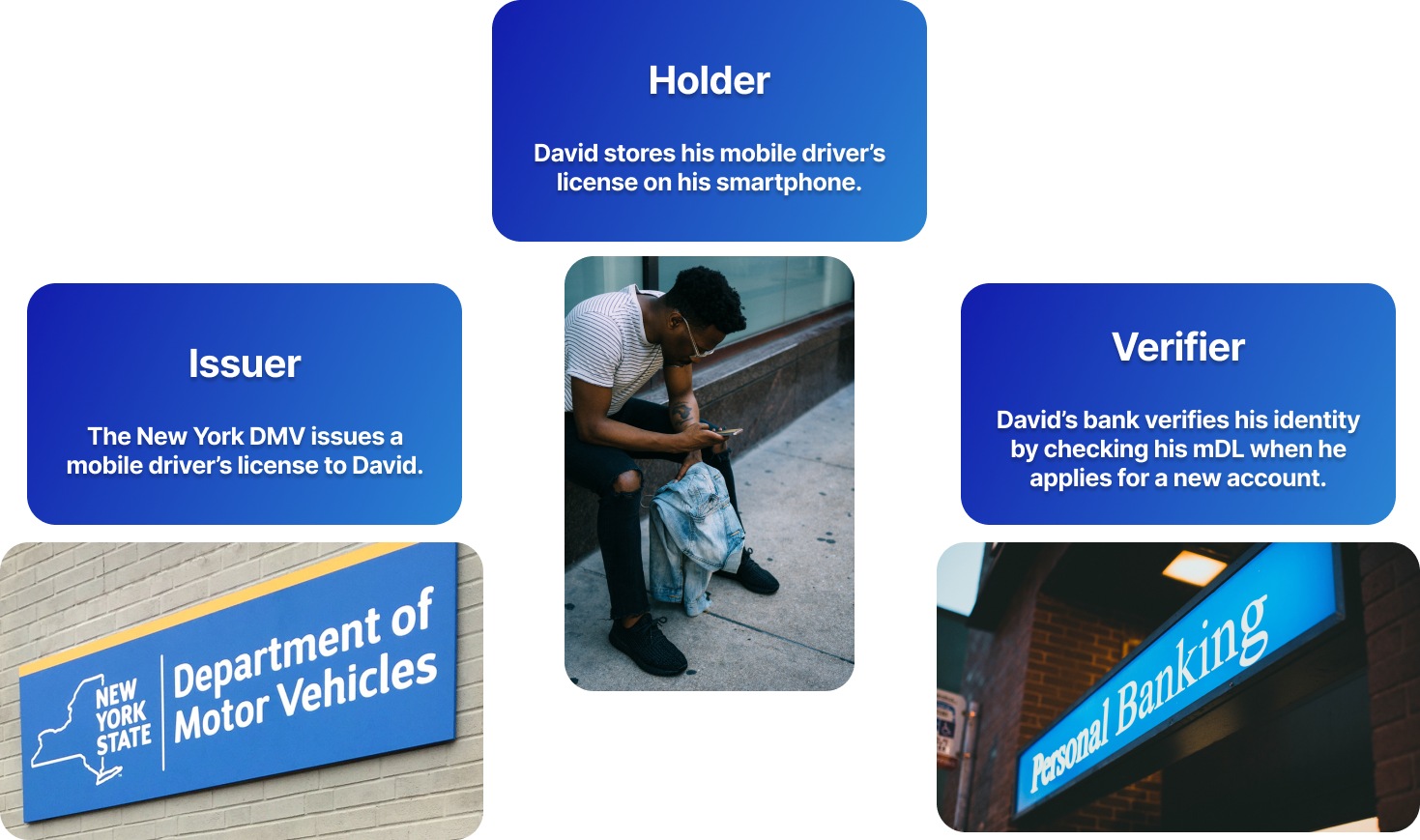Key Takeaways
Traditional methods of proving identity are not designed for today’s digital-first world. Verifiable digital credentials (VDCs) create a trusted, tamper-resistant way to confirm identity while protecting privacy.
Why Trust Matters in Verifiable Digital Credentials
Standardizing data formats is not enough to digitize driver’s licenses or other credentials. Security is essential. A verifier, such as a bank or airport, must trust that the credential is authentic and was issued by the correct authority. At the same time, the individual presenting the credential needs assurance that their personal information will not be misused, tracked, or shared without consent.
Historically, credentials relied on physical trust markers: wax seals, ink signatures, and later electronic formats such as PDFs and e-signatures. While helpful, these methods can still be forged or altered. The next phase of identity is built on cryptography, where credentials are provably authentic and resistant to tampering.

What Are Verifiable Digital Credentials?
A VDC is a cryptographically signed identity document issued by a trusted authority. Examples include a mobile driver’s license, a university diploma, or an employee badge. These credentials are securely stored in a digital wallet and can be presented to verifiers when needed.
The critical feature is the digital signature. The issuing authority, such as a DMV or university, signs the credential, and this signature can be checked by others without contacting the issuer directly. This provides three benefits:
- Authenticity: Credentials are proven to come from the stated issuer.
- Integrity: Any tampering or alteration is immediately detectable.
- Privacy: Holders can control what data is shared and with whom.
The Three-Party Model
VDCs operate within a three-party model that ensures both trust and efficiency:
- Issuers: Organizations such as universities, DMVs, or employers that create and sign credentials.
- Holders: Individuals who store their credentials in a secure digital wallet.
- Verifiers: Entities such as banks, healthcare providers, or government agencies that confirm the authenticity of a credential.
For example, a holder of a mobile driver’s license issued in New York can present proof that they are a resident without disclosing their full address. This selective disclosure reduces the exposure of unnecessary personal information while still satisfying the verifier’s requirement. The data model for verifiable digital credentials is outlined in the W3C Recommendation, "Verifiable Credentials Data Model v1.1," which was published in 2019 and updated in 2022.

The Role of Standards
Industry adoption is accelerating. Companies such as Microsoft, IBM, Ping Identity, Okta, and Workday are implementing credential frameworks. Government initiatives, including the DHS SVIP program, also support pilots for employee credentialing, citizenship documentation, and healthcare applications. This momentum signals that VDCs are not experimental but on the path to mainstream deployment.
Why This Matters for the Future
Without VDCs, online identity proofing remains slow, inconsistent, and vulnerable to fraud. Individuals must repeatedly share sensitive data, which increases risk. Organizations must store this data, making them targets for costly breaches.
With VDCs, identity checks become faster, safer, and more private. Instead of uploading scans or sharing entire datasets, individuals can prove only what is required. A bar only needs confirmation of age, not an address or full legal name. An employer only needs to know that an applicant has a degree, not necessarily from which institution. This approach aligns with privacy-first principles, reduces fraud opportunities, and creates smoother user experiences.
Conclusion
Verifiable digital credentials are a cornerstone of the next generation of digital identity solutions. Built on cryptography, they make credentials tamper-evident, interoperable, and privacy-preserving. As adoption grows across government, healthcare, education, and financial services, they will replace outdated paper processes with a universal system of trust. The result is an internet where proving identity is simple, secure, and under individual control.

